2019 Progress Report
About CDC


The Centers for Disease Control and Prevention (CDC) uses science and innovation to prevent, detect and respond to the most urgent public health threats. Our Strategic Framework & Priorities further CDC’s proven leadership of putting science into action to save lives and protect people.
We are excited to share with you the accomplishments and milestones reached through the Strategic Framework & Priorities in 2019. To keep improving upon these successes, we will continue investing and acting globally to be better prepared to combat any threat to the health and safety of American citizens, no matter where in the world it might first arise. With this vision for the future, CDC will be well positioned to continue our proud history of putting science into action. We look forward to enduring progress, collaboration and engagement to achieve CDC’s mission of saving lives and protecting Americans.
CDC’s Strategic Framework centers our work around the agency’s core mission to save American lives by securing global health, ensuring domestic preparedness, eliminating disease, and ending epidemics. Science and innovation provide a foundation for us to prevent, detect and respond to disease outbreaks. Our commitment is to stop the spread of contagions at their source, revitalizing the nation’s public health infrastructure, and addressing bioterrorism and other pressing health threats, including those posed by vector borne diseases. We work to eliminate disease such as HIV, Hepatitis C, and the many vaccine-preventable diseases. We focus on ending epidemics, specifically decreasing opioid overdoses, improving strategies and interventions to stem seasonal influenza, developing and deploying comprehensive prevention strategies for antibiotic-resistant infections, and preventing new cases of diabetes. These priorities are attainable through the leadership and commitment of CDC and its partners to confront and respond to health threats wherever they may occur.
CDC’s five core capabilities will accelerate and enable these priorities: optimize and employ world-class data and analytics, maintain state-of-the-art laboratory capacity, build and sustain top-tier public health expertise, quickly respond to outbreaks at their source, and build on the foundation for strong global health capacity and domestic preparedness. Our Strategic Framework & Priorities are also enabled by unique expertise and interdependent capabilities, including strategic communications, operational excellence, partnerships, and FY 2020 budget support for the core capabilities and key priorities including funding for public health data modernization, global health security, and rapid response fund.

Robert R. Redfield
CDC Director
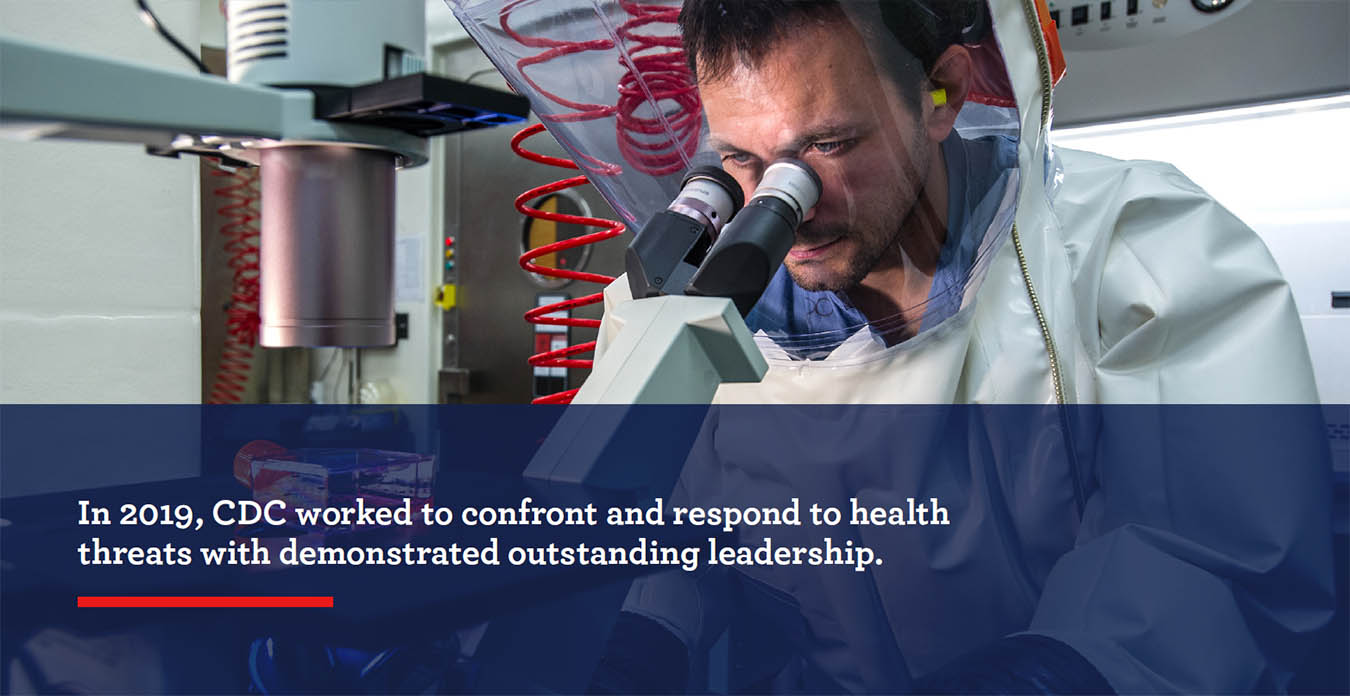
Secure Global Health and Domestic Preparedness
CDC works to confront and respond to health threats wherever they occur. In 2019, CDC excelled in many efforts to secure global health and improve U.S. preparedness, including:
- CDC employed lessons learned from the 2014-2016 Ebola epidemic in West Africa to two separate Ebola outbreaks in the Democratic Republic of Congo (DRC) in 2018 and 2019. CDC’s border health technical assistance has improved public health screening for more than 77 million travelers at 80 check points in the DRC since the outbreak began. As of December 22, 2019, WHO reported over 130 million persons screened.
- CDC activated its Emergency Operations Center (EOC) and with FDA, state and local health departments, and other clinical and public health partners, investigated an outbreak of acute lung injury from use of e-cigarette or vaping products associated with THC.
- To provide the public with the latest information, CDC reported in its December 31, 2019 Outbreak Update, that there were 2,561 hospitalized EVALI (Electronic Vaping Associated Lung Injury) cases or deaths from all 50 States, the District of Columbia, and two U.S. territories (Puerto Rico and U.S. Virgin Islands). Fifty-five of those individuals died of their injuries.
- Laboratory data demonstrated in 2019 that vitamin E acetate—an additive in some THC-containing e-cigarette, or vaping, products—is closely associated with EVALI. CDC continues to collaborate with FDA and other partners to characterize injury, exposure, and product use characteristics of affected individuals.
- CDC awarded funding to launch the HHS priority program Ending the HIV Epidemic (EHE): A Plan for America for conducting new state and local planning. CDC leadership participated in visits/activities involving 38 EHE jurisdictions hardest hit by this epidemic, and the visits included state, local, tribal and territorial (STLTS) leaders, governors, community-based organizations, and people living with HIV, as well as Office of the Assistant Secretary for Health (OASH), Health Resources & Services Administration (HRSA), and Indian Health Services (IHS) representatives. CDC has interacted with 122 Congressional member offices on this topic, 95 of which represent an EHE jurisdiction.
- CDC led a major public health response effort to the largest measles outbreak in the U.S. since 1992 in close-knit communities to protect the nation’s elimination status. Intensive assets from CDC and at state and local levels were deployed to extinguish the outbreak keeping the status of measles elimination in the US. As of September 2019, there were 1,243 measles cases linked to travelers coming from other countries with large measles outbreaks like Israel, Ukraine, and Philippines. Broader partnerships were engaged to tackle vaccine hesitancy in diverse populations with more than 75 percent of the cases are linked to outbreaks in New York.
- CDC is investigating Acute flaccid myelitis (AFM) working with national experts, healthcare providers, and state and local health departments. CDC conducts active surveillance through the National Viral Surveillance Network at tertiary care children’s hospitals and reviews medical charts of each AFM case. CDC will continue to enhance AFM surveillance capacity in states and follow up of cases to better understand long-term effects and risk factors. With the AFM Task Force of national subject matter experts, CDC is helping better understand the cause of AFM, how to prevent and how to treat it. CDC will support efforts to promote awareness of AFM among front-line clinicians, update treatment options and track long-term outcomes.
- CDC also led an investigation into nearly 24,000 hepatitis A cases that were part of the widespread outbreaks affecting more than 29 states. Sixty percent of cases resulted in hospitalizations and 236 people died. CDC was active in every affected state in their outbreak response efforts.
- CDC supported 25 states for the Enhancing Reviews and Surveillance to Eliminate Maternal Mortality (ERASE MM) program to coordinate and manage Maternal Mortality Review Committees which identify, review, and characterize maternal deaths and identify prevention opportunities. CDC supported Perinatal Quality Collaboratives (PQCs) networks to improve quality of care for mothers and babies. Additionally, CDC conducted research on the warning signs for pregnancy-related death or delivery complications.
- CDC published a Morbidity and Mortality Weekly Report Surveillance Summary in March 2019 on its National Environmental Assessment Reporting System data. The report helped prioritize training and interventions for state and local food safety programs and the retail food industry by identifying gaps in food safety policies and practices and types of establishments vulnerable to outbreaks.
End Epidemics
To end epidemics and improve the health of the U.S. population, accomplishments include:
- CDC efforts to end the opioid epidemic included standing up opioid rapid response teams and training curriculum, as well as accelerating the monitoring of death and emergency department visits. It sent more than $300 million in support funds to state and local health departments for prevention activities. These efforts yielded a nearly 5 percent decline in annual drug overdose deaths as shown in provisional data from National Vital Statistics. Naloxone use by pharmacies doubled and high-dose opioid prescriptions fell by 20 percent.
- CDC developed and characterized more than 50 vaccine candidate viruses for vaccine manufacturers and characterized more than 10,000 influenza viruses. Next generation genetic testing was used to provide crucial information for vaccine improvement and drug development.

The funds invested in CDC support the nation’s health in various ways. In collaboration with its partners, CDC has advanced many areas of public health including:
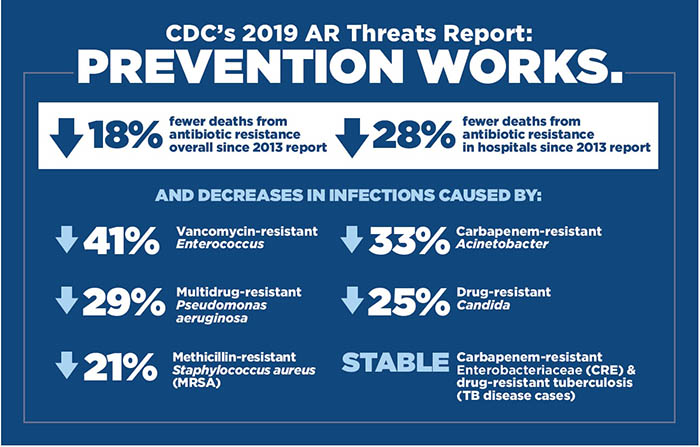
Protecting Americans from Infectious Diseases
- CDC and the National Tuberculosis (TB) Controllers Association (NTCA) released updated recommendations in May 2019 for TB screening, testing, and treatment of health care personnel. Recommendations include encouraging treatment for all healthcare personnel with untreated latent TB infection and eliminating the annual, routine TB screening for most healthcare personnel unless there is occupational risk or ongoing exposure.
- CDC’s Antibiotic Resistance (AR) Solutions Initiative invests in national infrastructure to detect, respond, contain, and prevent resistant infections, including supporting the AR Lab Network. As of October 2019, CDC’s AR Lab Network tested more than 170,000 specimens for antibiotic resistance, and sent more than 2,300 alerts about unusual resistance for public health investigation. In hospitals alone, progress has been made to prevent infections and protect patients.
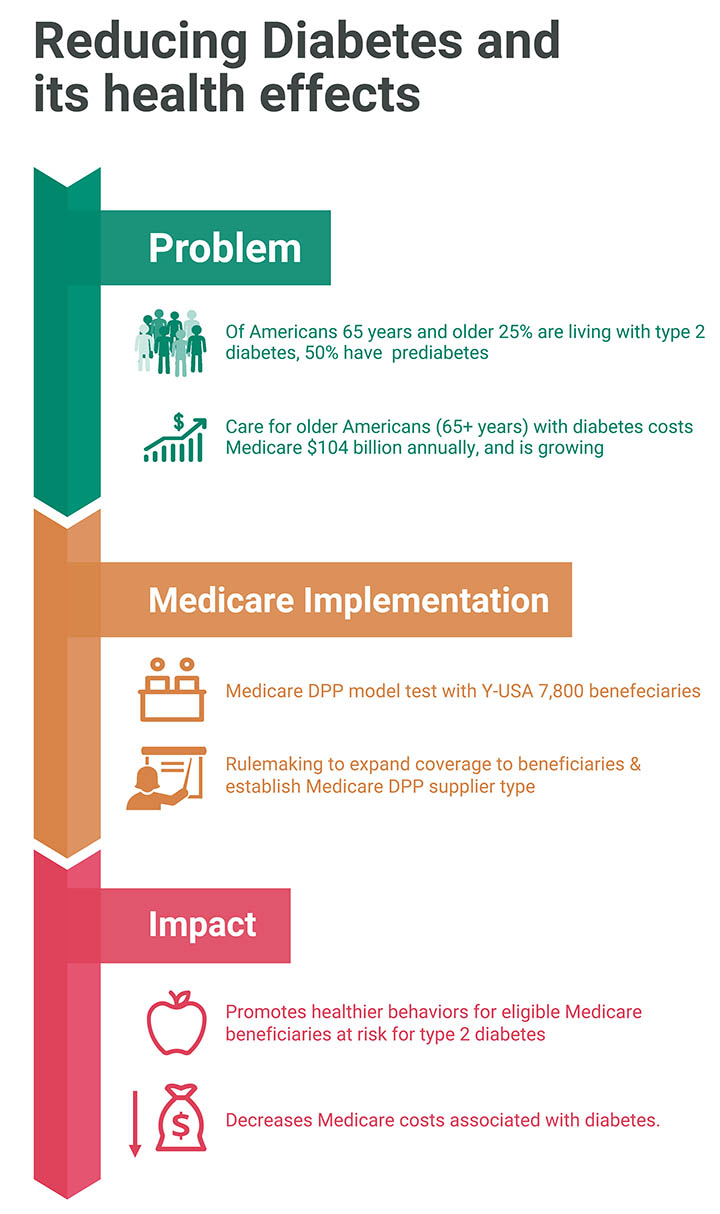
Preventing the Leading Causes of Disease, Disability and Death
- CDC Project 3-3: Children with Asthma is working to identify factors associated with asthma exacerbation in children following the 2017 Hurricanes Harvey and Maria. It aims to establish or improve programs to reduce asthma burden among children during and after hurricanes. It was through this project that the Houston Health Department was able to expand their existing asthma projects into an overall asthma program called the Houston Asthma Prevention and Control Program in their Bureau of Community and Children’s Environmental Health.
- CDC recognized more than 1,500 organizations for delivering CDC’s National Diabetes Prevention Program lifestyle change program, with participation of about 300,000 people at high risk for type 2 diabetes as of July 2019.
- CDC grantees in the Colorectal Cancer Control Program have partnered with over 760 health system clinics that serve over 1,240,000 patients age-eligible for colorectal cancer screening through March 2019. Screening rates have increased from 42.9% in 2016 to 52.6% in 2018 among clinics recruited in the first year of the program. In contrast, national screening rates for the U.S. have consistently increased by only one to two percentage points every two years.
- CDC created quality assurance materials for molecular newborn screening tests that identify babies at risk for Galactosemia, a deadly metabolic disorder, and pilot tested the materials with seven state newborn screening programs. These materials are making sure that labs using molecular tests can accurately identify babies for treatment.
- CDC resources helped the Forest County Potawatomi Community, a tribal nation in Wisconsin, create a media campaign, working with the Tribe’s Executive Council, to target stigma associated with opioid use disorder within the Native Americans. The media campaign featured a television ad running 62 times per week during peak programming and billboards with images of tribal members. Since it launched, the Forest County Potawatomi Community has had no deaths from overdoses and an increase in community members seeking inpatient treatment, medication-assisted treatment, and residence in transitional living homes.
- CDC’s Essential for Childhood program recipient states were able to increase the percentage of Community-Based Child Abuse Prevention dollars invested in evidence-based programs from 24% to 52% between 2013 and 2018. Essentials for Childhood recipients are strong resources for decision makers, relaying what works for prevention of child abuse and neglect. For example, Colorado extended its Nurse-Family Partnership to all counties, providing them with information, caregiver support, and training about child health, development, and care to families in their homes. It documented a 48%relative reduction in child abuse and neglect and reductions in risk factors associated with child abuse and neglect.
Protecting Americans from Natural & Bioterrorism Threats
- CDC’s Public Health Emergency Preparedness program helped prepare states for ever-evolving threats in a variety of ways including trainings, exercises, and familiarity with the Emergency Management Assistance Compact (EMAC), to keep their residents safe during times of crisis.
- CDC supported the North Carolina health department to meet the needs of more than 250 medically dependent patients who were evacuated to shelters, and 1,000 patients who sought medical care at field hospitals during Hurricane Florence, using EMAC – a system that allows states to transfer critical personnel and resources during an emergency. States from across the country rapidly deployed 169 public health nurses to North Carolina for staffing support, airlifting some of them into places like coastal Brunswick County, which became isolated from the rest of the state from flooding. These nurses were instrumental in providing safe medical and public health conditions for tens of thousands of vulnerable evacuees.
- CDC supported state and local health department personnel who staffed emergency operations centers, provided environmental inspection at the shelters, and conducted public health surveillance to prevent disease outbreaks. They coordinated the transport of time-critical newborn screening specimens, vaccines, and metabolic infant formula, and organized mosquito control activities. These activities helped keep the 20,000 evacuees living in shelters safe, as well as those who remained in their homes.

Source: www.cdc.gov/niosh/topics/workercomp/cwcs/wcsummary-dashboards
Keeping Americans Safe from Environmental and Work-related Hazards
- CDC published a web-based data visualization dashboard (in the figure below) to examine 1.4 million workers compensation claims in Ohio to create a causation-specific injury surveillance system using existing claims databases. These findings helped focus prevention resources on specific occupational injury types in specific industry groups, especially in Ohio. The study received the Kammer Award for Authorship for the most outstanding article of 2018 published by the Journal of Occupational and Environmental Medicine.
- CDC released the Dampness and Mold Assessment Tool for general buildings and schools to help employers identify and assess dampness in buildings. The tool helps users determine the severity of known and unknown areas of dampness and mold, prioritize repair and remediation and track problems. Various stakeholders have disseminated the tool including the National Safety Council, American Industrial Hygiene Association, and Navy and Marine Corps Public Health Center.
- CDC revised its Model Aquatic Health Code in 2018 to include recommendations to prevent toxic chlorine gas releases at aquatic venues. The recommendations stemmed from a 2015 investigation of a chemical release of toxic chlorine gas at a municipal swimming pool done by a CDC Career Epidemiology Field Officer.
- CDC’s Data Linkage Program provided evidence which supported policy decisions for the U.S. Department of Housing and Urban Development (HUD). HUD’s 2018–2022 Strategic Plan used findings to support the removal of lead-based paint hazards in HUD homes. HUD also used this evidence in a proposed rule to lower the threshold for elevated blood lead level determination to align to CDC standards.
Monitoring Health and Ensuring Laboratory Excellence
- CDC labs tested more than 6,700 specimens from U.S. residents and government overseas staff for parasitic diseases and responded to approximately 5,000 inquiries via its 24/7 hotline, many of them urgent requests related to life-saving consultations, diagnosis, and treatment.
- CDC’s Coal Worker’s Health Surveillance Program provided 8,398 chest x-ray screening examinations and reviewed 2,758 spirometry test results from its mobile unit and 40 Spirometry Clinics in 11 states in 2019. The program’s goal is prevention of coal workers’ pneumoconiosis or black lung, or to keep it from progressing to a disabling disease.
- CDC developed new laboratory tests for detecting antiviral resistance to baloxavir (XOFLUZA™), a new class of anti-flu treatment approved in late 2018. This will allow CDC to rapidly detect and communicate emergence of resistance to the drug.
- CDC completed the transition of PulseNet in July 2019, which is a national laboratory network that connects foodborne illness cases to detect outbreaks through whole genome sequencing (WGS), making it the new public health laboratory standard for enteric bacterial outbreak detection in the nation. WGS has been used successfully by CDC and state and local health departments since 2013 to detect and investigate outbreaks with a threefold increase in solving Listeria outbreak investigations and an overall decrease in the size of these outbreaks.
Ensuring Global Disease Protection
- CDC significantly expanded operations at specific quarantine stations to ensure nationwide availability and access to intravenous artesunate, the global standard treatment of severe malaria, to minimize deaths from severe malaria in returning U.S. travelers.
- CDC supported the Botswana Combination Prevention Project (BCPP) which accomplished more than a 30% decrease in new HIV infections among communities receiving enhanced prevention services in 2019. The Government of Botswana adopted successful BCPP interventions as part of its national guidelines.
- CDC supported tuberculosis screenings for 6.5 million people with HIV, accounting for 57% of all people with HIV who were screened for TB through PEPFAR.
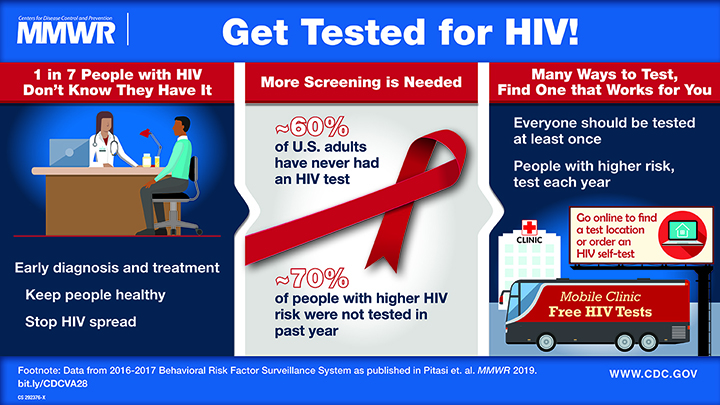
Cross Cutting Support and Block Grant
- Nationally-accredited health departments serve 80% of the U.S. population. The CDC-supported Public Health Accreditation Board has accredited 335 health departments—36 state, 3 tribal, and 296 local health departments (including 229 individually accredited local health departments and 67 county health departments through a centralized state application). Additionally, the first sites achieved reaccreditation to extend their accreditation status for another five years, demonstrating their continued commitment to improvement of health department services.
- CDC’s Mortality and Morbidity Weekly Review launched visual abstracts to increase traditional and social media users’ understanding and engagement with its content. CDC assessed the effectiveness of the use of visual abstracts by comparing tweets from articles with and without visual abstracts determining that tweets with visual abstracts doubled the attention received by these reports.
- CDC’s National Health and Nutrition Examination Survey data were used in over 2,000 publications in 2018 including journal articles and government publications, disseminating important health statistics to researchers and policymakers.
Protecting America’s health requires continuous improvement for our most vital and fundamental assets to meet our agency’s priorities. These core capabilities include:
- Optimize and employ world-class data and analytics,
- Serving as the reference lab to the world,
- Maintaining and growing elite public health expertise,
- Quickly responding to outbreaks at their source, both domestic and abroad, and
- Building on the current foundation for strong global health capacity and domestic preparedness.
Our Strategic Framework & Priorities are enabled by our unique expertise and interdependent capabilities including strategic communications, operational excellence, partnerships, and stakeholder engagement.
- In operational excellence, CDC has focused tremendous effort in pursuing how human capital goals and objectives can be implemented and measured to support the agency’s priorities. In workforce development, the Chief Human Capital Officer works closely with senior management and key stakeholders to incorporate human capital needs and strategies in the CDC strategic planning process. Strategic planning work includes a results-focused framework of human capital policies, programs, and practices to achieve the human capital goals and objectives of the CDC Strategic Framework & Priorities. CDC’s extensive knowledge-sharing activities contribute to employees’ understanding of CDC organizational enhancements and change-management initiatives. It also cascades expectations for CDC’s workforce from the CDC Strategic Framework via human capital goals, objectives, and corresponding performance measures and milestones.
This critical public health work can only be done with key partnerships across sectors.
CDC works extensively with partners across government and nongovernmental organizations to drive impact and achieve its goals.

World-class data and Analytics

Lab capacity

Workforce

Responding to outbreaks at their source

Global capacity and domestic preparedness
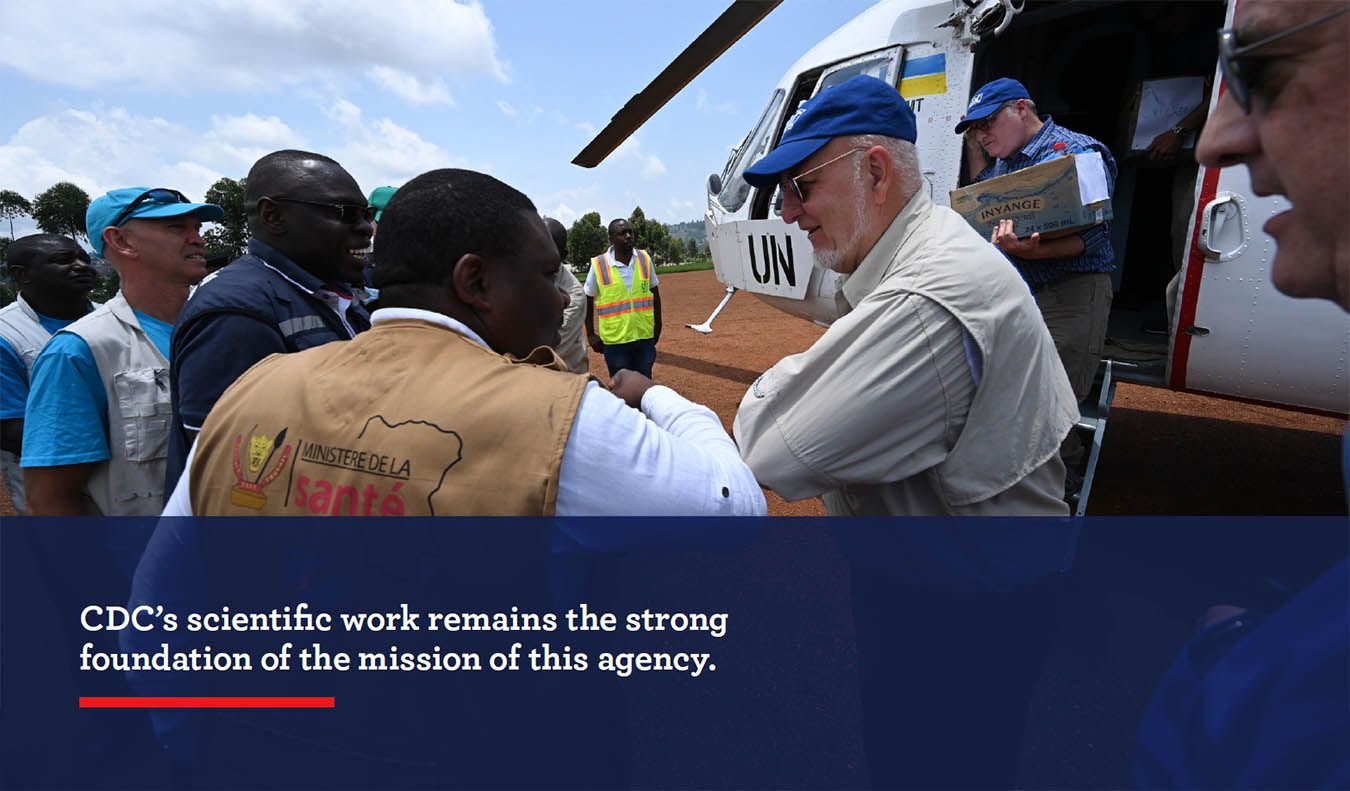
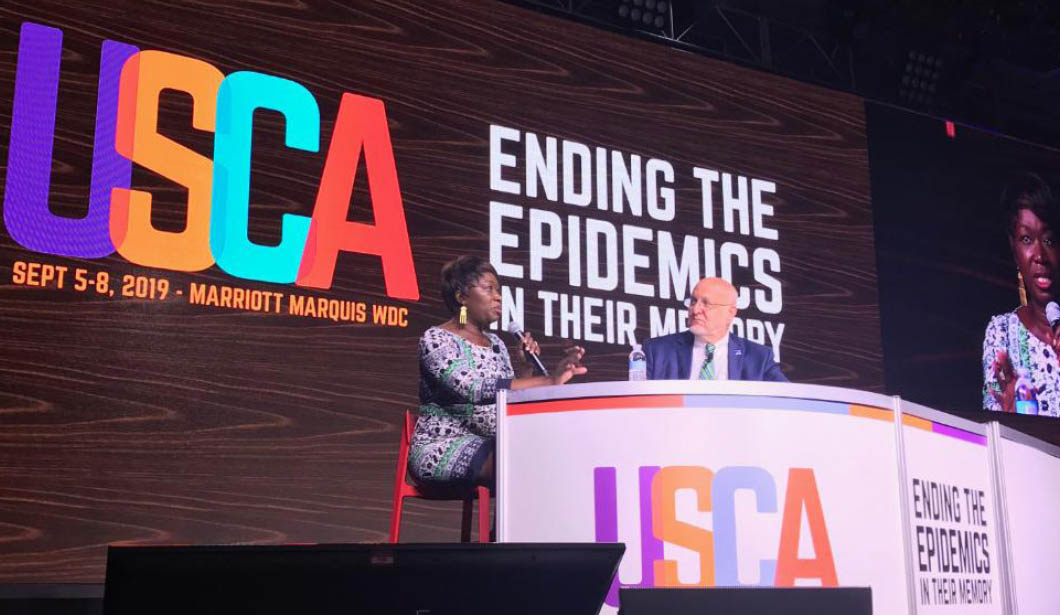
CDC saves American lives by securing global health, ensuring domestic preparedness, eliminating disease, and ending epidemics. CDC’s Strategic Framework & Priorities to save American lives cascade from an ambitious aspiration, into granular action plans, and detailed measures of success. CDC’s scientific work remains the strong foundation of the mission of this agency.
The Strategic Framework & Priorities were built with the input of about 100 of CDC’s experts, and reflects both the Director’s decades of research in virology, infectious diseases, and epidemiology, along with CDC’s deep knowledge and more than 70 years of experience responding to and preventing disease outbreaks. CDC is a large agency with a broad mandate and specific congressional directives. The Strategic Framework & Priorities highlights and reinforces major efforts and goals and is not inclusive of all our important work.
CDC uses a process called Winnable Battles to develop frameworks for action including milestones and goals, bringing together senior leaders from across the agency to discuss progress and challenges, engaging in collective problem solving, bringing all of CDC’s assets together to increase impact, and mobilizing partners to advance these goals. Winnable Battles focus on major topics related to eliminating disease and ending epidemics, such as HIV, viral hepatitis, opioid overdose, antibiotic resistance, vaccine-preventable diseases, and Million Hearts (focused on preventing one million heart attacks and strokes by 2022).
CDC’s focus in 2020 will be to continue or expand efforts in critical areas.
- In global health and domestic preparedness, CDC will help states prepare for ever-evolving threats through training, exercises, and by learning from the experiences of states that have engaged in response activities.
- To eliminate disease, CDC will focus on expanding work to prevent influenza by informing improvement activities in vaccine development and drug treatments. It will also continue monitoring antibiotic resistance trends to inform infection prevention activities.
- To end epidemics, such as the nation’s opioid epidemic, CDC will continue expanding its partnerships with public safety to implement innovative, evidence-based, community-level interventions.
- CDC will enhance data collection efforts to link data that can allow communities to share information and intervene across jurisdictions.
- CDC will also put focus to new and expanded areas, such as eliminating preventable deaths due to maternal mortality.
- CDC will continue to expand in its core capacities, including deploying world-class data and analytics, maintaining state-of-the-art laboratory capacity, building and sustaining top-tier public health expertise, quickly responding to outbreaks at their source, and building on the foundation for strong global health capacity and domestic preparedness.
- Together with its partners, the agency will continue its bold promise to America of securing global health and ensuring domestic preparedness, ending epidemics, and eliminating disease.
A Bold Promise to the Nation | www.cdc.gov/about/24-7/
CDC Strategic Framework | www.cdc.gov/about/organization/strategic-framework/
Winnable Battles | www.cdc.gov/winnablebattles/
5 Most Viewed Public Health Stories in 2019 from CDC’s Center for Global Health | www.cdc.gov/globalhealth/stories/top-2019-public-health-stories-cdc-center-for-global-health.html
Global Health – Stories | www.cdc.gov/globalhealth/stories/
